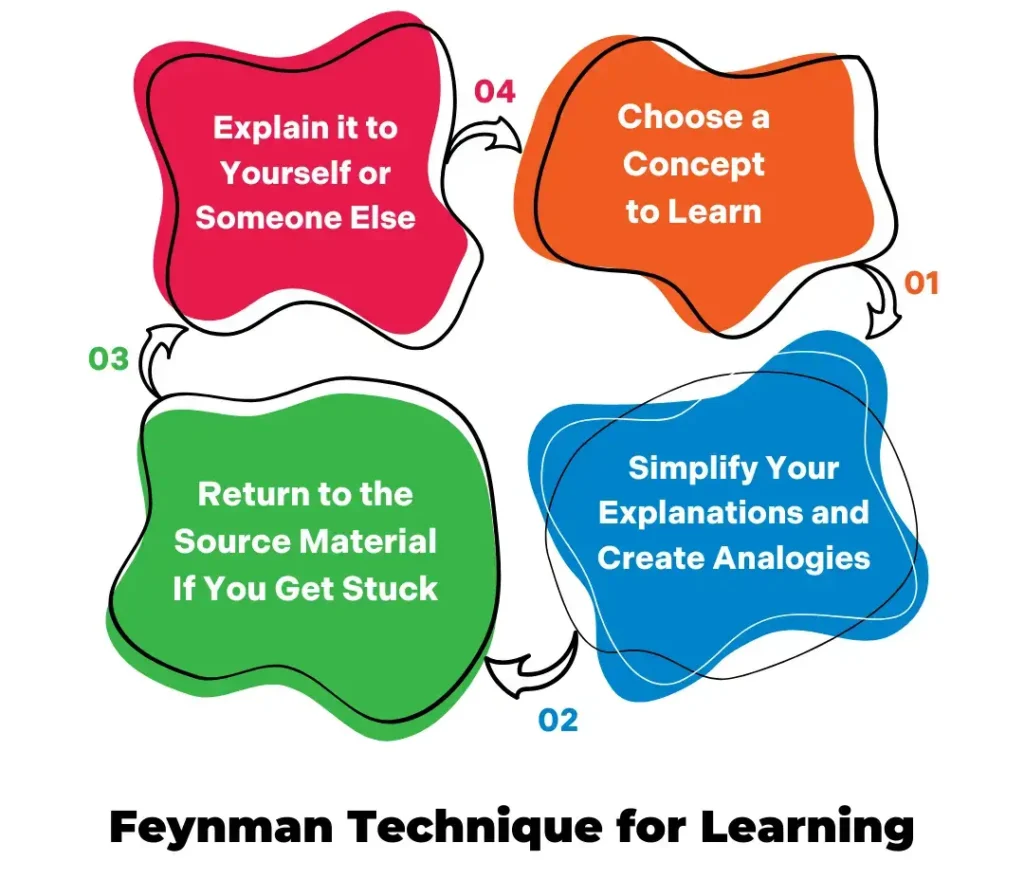How to Learn Anything 10x Faster Using the Feynman Technique
- Teachers
- March 18, 2025
- Viva Education

Learning is a continuous process. Becoming a genius is not easy, but with the right attitude and resilience, you can achieve it.
Einstein, Tesla, and Leonardo Da Vinci are all considered to be pioneers of their respective fields, but it took them a long time to reach that stature. What made them special was their continuous efforts and hunger to learn more. One of those great minds, Richard Feynman, developed a technique that can help you understand no matter how complex the subject is.
Now, this technique is not only for physicists or people of great academic stature; anyone can benefit from it. Students, teachers, and parents can use it when struggling with any subject. Let’s dive straight into learning a technique to help us become geniuses.
Feynman’s Technique – Four Pillars of Knowledge
The Feynman technique is a four-step learning method that can help you understand any concept.
With this technique, you do not have to memorise the subject or any part of it. The core of Fyenman’s belief was that explaining anything using simple terms automatically becomes easy to understand.
The technique is divided into four parts, each designed to help you understand and master the subject you are studying.
The Feynman Technique emphasises understanding as the most important part of learning, rather than just memorisation, making it one of the most Effective Learning Strategies for students and educators alike. But first, let’s understand the key difference between the two.
Understanding vs. Memorisation
You connect deeply to the subject when you actively engage with information by questioning, explaining, and applying it. Understanding allows you to break down complex ideas, explain them in simple terms, and use them in different situations. In contrast, memorisation only stores information temporarily without any fundamental understanding.
The Feynman Technique promotes active learning and understanding by encouraging you to simplify and teach concepts. It stands out among the most Effective Learning Strategies, helping learners internalise knowledge deeply rather than just memorising facts.
The 4 Steps of the Feynman Technique
1. Choose a Concept to Learn:
The first thing you need to do is select the subject or topic that you will target.
You only have to select one and write the topic’s name on a blank page. In the next step, write everything you know about that topic. When you do this, you can assess how much you know about the topic. Then, start with the fundamental concepts and gradually build upon them.
For example, if you are learning about the human body, start with its anatomy and then move on to its composition and workings. This approach works because instead of focusing on the entire subject/topic, you focus on the fundamentals, making learning much more straightforward.
2. Explain It to Yourself or Someone Else:
The next step is all about simplifying complex ideas. Imagine explaining the water cycle to a younger sibling or a friend who has never learned about it. You must break it down using simple words, pictures or real-life examples. Teaching is a great way to learn because, as you explain, you identify gaps in your understanding. Answering questions also strengthens your grasp of the topic.
Teachers or parents can organise a “Teach a Friend” activity to make this even more effective for students. In this exercise, children pair up and take turns explaining a concept to each other in their own words. If one struggles, the other can ask questions to guide them toward clarity. This reinforces learning and also boosts communication skills.
3. Return to the Source Material If You Get Stuck:
Learning is a continuous process, meaning there will be repetitions, which is entirely okay. Encourage students to revisit chapters regularly instead of just memorising them once.
For example, if students struggle to explain a science concept, guide them to review their notes and try again. This approach helps reinforce knowledge over time. A great way to apply this in class is through “Review and Teach” sessions, where students revisit previous lessons and explain key points to their peers. Just like experienced teachers can teach without referring to books, repeated exposure to study material helps students develop a deeper understanding and see the bigger picture.
Revisiting the study material multiple times strengthens your expertise in the subject, resulting in increased knowledge that helps you see the bigger picture.
4. Simplify Your Explanations and Create Analogies:
You don’t need to follow the terminologies used in books or papers to learn or teach. You can make concepts easy by using more straightforward terms and even your analogies, which can improve the overall learning experience and will be better when you communicate it with others.
You can teach fractions by asking them to divide pizza slices among students. You can compare fractions to pizza slices, resulting in an easier grasp of the topic.

Simple explanations always result in much deeper learning. When mixed with personal analogies, one can master any topic.
How the Feynman Technique Works in Practice
The Feynman technique eliminates self-deception. You can not just say, “I understand this,” and move on. When you explain a concept independently, you can isolate the gaps you have. For example, if a child describes how plants grow and says, “You just give them water and sunlight, and they grow,” they might pause and realise they’re unsure why plants need soil. This moment of confusion shows them exactly what they need to learn next, helping them go back, ask questions, and understand it better. This method forces learners to pinpoint exactly what they don’t know, allowing them to revisit and strengthen those areas.
Students move closer to true mastery of the subject by continuously explaining and refining their understanding.
Conclusion
The Feynman Technique is a proven and robust method for mastering complex topics. While not everyone is familiar with it, this technique can benefit learners of all ages. Since learning is a lifelong journey, having a method that ensures proper understanding is like having a secret weapon.
Next time you approach a new topic, start with the fundamentals. Then, solidify your understanding by teaching or explaining it to someone else. If you struggle, return to your study material and refine your knowledge. By following this cycle, you can develop a deep and lasting grasp of any subject.
>> Please Share



